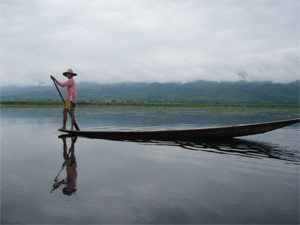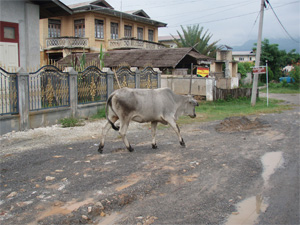Semester at
Sea Fall
2006 Voyage 
- Home Page
- My bio
- Comparative Global
Cities Project: Crossing the Globe: When Vernacular and
Transnational Mix (China and Spain)
- Hong Kong:Same Country, Two Different Worlds
- Burma:
Burmese Colonial Architecture
- India:
A Country of Extremes
- Turkey:
St. Sophia
- Croatia:
An Empty Country
- Spain: Vernacular in a Transnational World
- Open Letter
Burmese Colonial Architecture
By Lindsay Kuhlmann
 “
“
This quote
found
in Donald M. Seekins' “The State and the City: 1988 and the
Transformation of Rangoon” is
something that I related to when visiting
 Everywhere that I
visited it was almost impossible not to financially support the
government.
From the hotels to the airlines many of the tourist industries seemed
to be
controlled by the military regime in power or at the very least heavily
taxed
by the government. Ethically I found it very confusing to visit
Everywhere that I
visited it was almost impossible not to financially support the
government.
From the hotels to the airlines many of the tourist industries seemed
to be
controlled by the military regime in power or at the very least heavily
taxed
by the government. Ethically I found it very confusing to visit